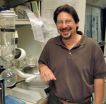(Press-News.org) New York University physicists have developed a method for packing microscopic spheres that could lead to improvements in commercial products ranging from pharmaceutical lotions to ice cream. Their work, which relies on an innovative application of statistical mechanics, appears in the Proceedings of the National Academy of Sciences.
The study aimed to manipulate the properties of emulsions, which are a mixture of two or more immiscible liquids. The NYU researchers examined droplets of oil in water, which form the basis of a range of consumer products, including butter, ice cream, and milk.
The research was conducted in the laboratory of Jasna Brujić, an assistant professor in NYU's Department of Physics and part of its Center for Soft Matter Research.
Previously, her laboratory determined how spheres pack. These earlier findings showed how this process depends on the relative sphere sizes. In the PNAS study, Brujić and her research team sought to create a method to manipulate further how particles pack.
To do so, the researchers relied on a physical property known as "depletion attraction," a force that causes big particles to stick together by the pressure from the surrounding small ones.
Previous research has employed this process of attraction to create particulate gels, but these studies have tended to rely on thermally activated particles—below one micron in size—that result in complex structures known as fractals that look similar on all length scales.
In the PNAS study, the researchers used larger particles, which are not sensitive to room temperature and therefore pack under gravity alone.
To bring about depletion attraction, they added tiny polymers to the larger particles suspended in water. In essence, they used the smaller polymers to force together the larger spheres. In order to regulate the nature of this packing—how tightly or loosely the larger particles fit together—the researchers developed a statistical model that determines the fluctuations in the local properties of the packing.
"What we discovered is that you can control the connectivity of the particles—how they stick together and their properties—by manipulating the extent of the attraction," explained Brujić.
As a result of the discovery, the researchers have developed a method for potentially creating a range of materials—from loose to dense—based on the packing of their component parts.
INFORMATION:
The study's other authors were Ivane Jorjadze, a graduate student, and Lea-Laetitia Pontani, a postdoctoral research scientist, both from NYU's Department of Physics and the Center for Soft Matter Research, as well as Katherine Newhall, a doctoral student at Rensselaer Polytechnic Institute.
END
New York University researchers have isolated neural activity that reflects basic mechanisms used by the brain to combine elementary pieces of language in order to construct complex ideas.
The study, which appears in the Journal of Neuroscience, was conducted by Douglas Bemis, a graduate student in NYU's Department of Psychology, and Liina Pylkkänen, an associate professor in NYU's Department of Psychology and Department of Linguistics.
Researchers have long studied the neural regions that underlie the processing of complete sentences and other complex linguistic ...
More than 45 years after the Civil Rights Act of 1964, National Science Foundation (NSF) statistics show minority academic institutions still enroll a substantial number of minority students, but the percentage of minorities earning bachelor's degrees in science and engineering (S&E) from minority-serving institutions has declined over time.
Statistics published today in a report titled "Women, Minorities, and Persons with Disabilities in Science and Engineering: 2011" show that 26 percent of blacks earned S&E bachelor's degrees from historically black colleges and universities ...
PHILADELPHIA – Recently, a research team from the Department of Emergency Medicine at Jefferson Medical College of Thomas Jefferson University discovered an alarming amount of lead contamination in ceramic cooking and eating utensils sold in Philadelphia's Chinatown. The team, led be Gerald O'Malley, D.O., director of Clinical Research; and Thomas Gilmore, M.D., resident, purchased and tested a sampling of Chinese ceramics. Using a LeadCheck®, one area on each item was rubbed with a lead-detecting solution. In almost 30 percent of the items, the area turned pink or red, ...
CHAMPAIGN, lll. — A farmer in Niger learns how to protect his crops from insects. A resident of Port-au-Prince or a rural Haitian village learns how to avoid exposure to cholera. An entrepreneur in Mali gets step-by-step instructions on extracting the oil from shea seeds to make shea butter she can sell at a local market.
These people are benefiting from a new approach to sustainable development education that reaches a much larger audience than traditional methods – and at a fraction of the cost. The initiative, led by a team of extension educators and faculty at the ...
FAIRFAX, Va., February 28, 2011—Death can be terrifying. Recognizing that death is inescapable and unpredictable makes us incredibly vulnerable, and can invoke feelings of anxiety, hatred and fear. But new research by George Mason University psychology professor Todd Kashdan shows that being a mindful person not only makes you generally more tolerant and less defensive, but it can also actually neutralize fears of dying and death.
"Mindfulness is being open, receptive, and attentive to whatever is unfolding in the present moment," says Kashdan. In his latest research, ...
Sanfilippo disease is a rare disorder caused by the failure of enzymes to break down specific kinds of complex carbohydrates, resulting in their accumulation in cells and often severe physical and neurological problems – and sometimes early death.
In a paper published in the March 4 issue of the Journal of Biological Chemistry, researchers at the University of California, San Diego School of Medicine, led by Jeffrey D. Esko, PhD, professor in the Department of Cellular and Molecular Medicine, describe the build-up of a novel secondary metabolite in Sanfilippo disease, ...
A Wayne State University School of Medicine physician-researcher has developed a personalized therapy to treat a wide range of cancers. The treatment is based on a naturally occurring human enzyme that has been genetically modified to fool cancer cells into killing themselves.
The unique concept, patented by Wayne State University, was successfully demonstrated on melanoma cells that are resistant to routine treatments such as chemotherapy or radiotherapy. Melanoma is a perfect model for testing this new therapy because it is considered the most aggressive form of human ...
If Dr. Doolittle is famous for talking to animals, then here's a story that might make him hold his tongue: According to new research published online in The FASEB Journal (http://www.fasebj.org), scientists have successfully fused human stem cells derived from subcutaneous adipose (fat) tissue with muscle cells from rat hearts. Not only did these cells "talk" to form new muscle cells altogether, but they actually beat.
"Recovery of regenerative cells located in the stromal vascular fraction of a patient's own subcutaneous tissue is relatively simple and can be used for ...
University of Maryland School of Medicine researchers have identified two genes associated with binge drinking that may open doors to new, more effective treatments for excessive alcohol drinking. The scientists found that manipulating two receptors in the brain, GABA receptors and toll-like receptor 4 (TLR4), "caused profound reduction" of binge drinking for two weeks in rodents that had been bred and trained to drink excessively. The study was published online the week of Feb. 28 in the journal the Proceedings of the National Academy of Sciences.
About 30 percent of ...
PROVIDENCE, R.I. [Brown University] — Excessive weight gain isn't healthy at any stage of life, but during pregnancy it can do lasting harm to the mother and baby alike. Now researchers at Brown University and The Miriam Hospital are encouraged by a new study describing an intervention that helped pregnant women control their weight.
"This study suggests that a lifestyle intervention can help women manage their weight during pregnancy, prevent health problems during pregnancy, and reduce weight retention after having a baby," said study lead author Suzanne Phelan, adjunct ...

